
Professor Abraham Van Helsing is a fictional character from the 1897 gothic horror novel Dracula written by Bram Stoker. Van Helsing is a Dutch polymath doctor with a wide range of interests and accomplishments, partly attested by the string of letters that follows his name: "MD, D.Ph., D.Litt., etc.", indicating a wealth of experience, education and expertise. He is a doctor, professor, lawyer, philosopher, scientist, and metaphysician. The character is best known through many adaptations of the story as a vampire slayer, monster hunter and the arch-nemesis of Count Dracula, and the prototypical and the archetypal parapsychologist in subsequent works of paranormal fiction. Some later works tell new stories about Van Helsing, while others, such as Dracula (2020) and I Woke Up a Vampire (2023) have characters that are his descendants.

Dracula is a 1958 British gothic horror film directed by Terence Fisher and written by Jimmy Sangster based on Bram Stoker's 1897 novel of the same name. The first in the series of Hammer Horror films starring Christopher Lee as Count Dracula, the film also features Peter Cushing as Doctor Van Helsing, along with Michael Gough, Melissa Stribling, Carol Marsh, and John Van Eyssen. In the United States, the film was retitled Horror of Dracula to avoid confusion with the U.S. original by Universal Pictures, 1931's Dracula.
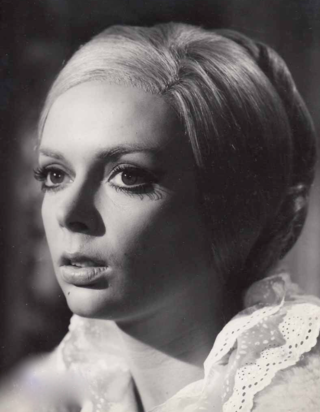
Barbara Steele is an English film actress known for starring in Italian gothic horror films of the 1960s. She has been referred to as the "Queen of All Scream Queens" and "Britain's first lady of horror". She played the dual role of Asa and Katia Vajda in Mario Bava's landmark film Black Sunday (1960), and starred in The Pit and the Pendulum (1961), The Horrible Dr. Hichcock (1962), The Long Hair of Death (1964), and Castle of Blood (1964).

Mario Bava was an Italian filmmaker who worked variously as a director, cinematographer, special effects artist and screenwriter. His low-budget genre films, known for their distinctive visual flair and stylish technical ingenuity, feature recurring themes and imagery concerning the conflict between illusion and reality, as well as the destructive capacity of human nature. Widely regarded as a pioneer of Italian genre cinema and one of the most influential auteurs of the horror film genre, he is popularly referred to as the "Master of Italian Horror" and the "Master of the Macabre".

Witchfinder General is a 1968 British period folk horror film directed by Michael Reeves and starring Vincent Price, Ian Ogilvy, Hilary Dwyer, Robert Russell and Rupert Davies. The screenplay, by Reeves and Tom Baker, was based on Ronald Bassett's 1966 novel Witchfinder General. The film is a heavily fictionalised account of the murderous witch-hunting exploits of Matthew Hopkins (Price), a lawyer who falsely claimed to have been appointed as a "Witch Finder Generall" [sic] by Parliament during the English Civil War to root out sorcery and witchcraft. The plot follows Roundhead soldier Richard Marshall (Ogilvy), who relentlessly pursues Hopkins and his assistant John Stearne (Russell) after they prey on his fiancée Sara (Dwyer) and execute her priestly uncle John Lowes (Davies).

Wilhelmina "Mina" Harker is a fictional character and the main female character in Bram Stoker's 1897 Gothic horror novel Dracula.

Michael Reeves was an English film director and screenwriter. He is best remembered for the 1968 film Witchfinder General. A few months after the film's release, Reeves died in London at the age of 25 from an accidental alcohol and barbiturate overdose.
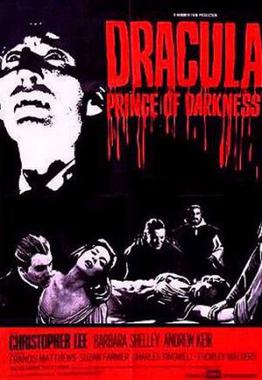
Dracula: Prince of Darkness is a 1966 British gothic supernatural horror film directed by Terence Fisher. The film was produced by Hammer Film Productions, and is the third entry in Hammer's Dracula series, as well as the second to feature Christopher Lee as Count Dracula, the titular vampire. It also stars Andrew Keir, Francis Matthews, and Barbara Shelley.

The Brides of Dracula is a 1960 British supernatural gothic horror film produced by Hammer Film Productions. Directed by Terence Fisher, the film stars Peter Cushing, David Peel, Freda Jackson, Yvonne Monlaur, Andrée Melly, and Martita Hunt. The film is a sequel to the 1958 film Dracula, though the character of Count Dracula does not appear in the film, and is instead mentioned only twice. Christopher Lee would reprise his role as Dracula in the next film in the Dracula series, Dracula: Prince of Darkness (1966).
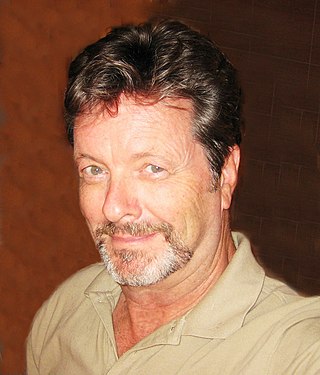
Ian Raymond Ogilvy is an English actor, playwright and novelist.

The Sorcerers is a 1967 British science fiction horror film directed by Michael Reeves, starring Boris Karloff, Catherine Lacey, Ian Ogilvy, and Susan George. The original story and screenplay were by John Burke.
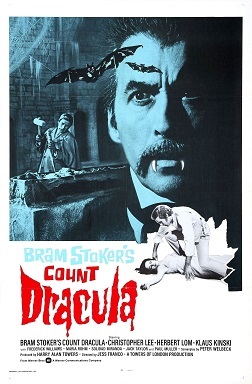
Count Dracula is a 1970 horror film directed and co-written by Jesús Franco, based on the novel Dracula by Bram Stoker. It stars Christopher Lee as Dracula, Herbert Lom as Van Helsing, and Klaus Kinski as Renfield, along with Fred Williams, Maria Rohm, Soledad Miranda, Paul Muller, and Jack Taylor.
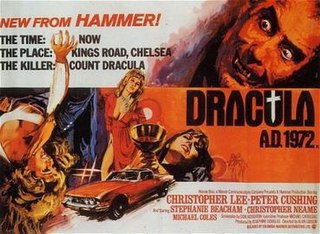
Dracula A.D. 1972 is a 1972 British horror film, directed by Alan Gibson and produced by Hammer Film Productions. It was written by Don Houghton and stars Christopher Lee, Peter Cushing and Stephanie Beacham. Unlike earlier films in Hammer's Dracula series, Dracula A.D. 1972 had a contemporary setting in an attempt to update the Dracula story for modern audiences. Dracula is brought back to life in modern London and preys on a group of young partygoers that includes the descendant of his nemesis, Van Helsing.

Dracula, also known as Bram Stoker's Dracula and Dan Curtis' Dracula, is a 1974 British made-for-television gothic horror film and adaptation of Bram Stoker's 1897 novel Dracula. It was written by Richard Matheson and directed by Dark Shadows creator Dan Curtis, with Jack Palance in the title role. It was the second collaboration for Curtis and Palance after the 1968 TV film The Strange Case of Dr. Jekyll and Mr. Hyde.

Richard Paul Ferris was an English composer and actor. Born in Corby, Northamptonshire, England, Ferris provided scores for various low budget British horror films during the late 1960s and early 1970s.
Dracula’s Widow is a 1988 vampire thriller film directed by Christopher Coppola, written by Tom Blomquist as Kathryn Ann Thomas, and starring Sylvia Kristel, Josef Sommer and Lenny von Dohlen. Kristel, in the title role, goes on a killing spree in a seedy 1980s Hollywood, while in search of her husband.
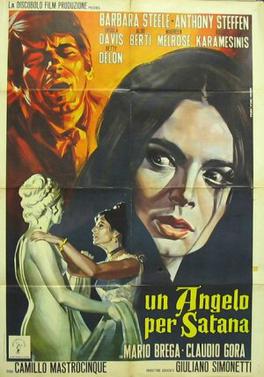
An Angel for Satan is a 1966 Italian horror film directed by Camillo Mastrocinque. It stars Barbara Steele in a dual role, as Harriet Montebruno / Belinda, and is set in a small Italian village by a lake. It is based on a short novel by Luigi Emmanuele. This was Barbara Steele's last "Italian Gothic".

The Murder Clinic is a 1966 slasher giallo film directed by Lionello De Felice and Elio Scardamaglia. It was produced by Elio Scardamaglia, Francesco Scardamaglia and Luciano Martino;. The screenplay was written by Martino and Ernesto Gastaldi from their own story. It stars William Berger, Françoise Prévost, Harriet White Medin, Mary Young, and Barbara Wilson.
Dracula is a film series of horror films from Universal Pictures based on the 1897 novel Dracula by Bram Stoker and its 1927 play adaptation. Film historians have had various interpretations over which projects constitute being in the film series; academics and historians finding narrative continuation between Dracula (1931) and Dracula's Daughter (1936), while holding varying opinions on whether Son of Dracula (1943), House of Frankenstein (1944) and House of Dracula (1945) are part of the series. Author and academic Gary Don Rhodes stated the all the mentioned films would require an audience to be familiar with Count Dracula, portrayed by Bela Lugosi, and the various character traits the actor established in the original 1931 film.
Dracula is a British horror film series produced by Hammer Film Productions. The films are centered on Count Dracula, bringing with him a plague of vampirism, and the ensuing efforts of the heroic Van Helsing family to stop him. The original series of films consisted of nine installments, which starred iconic horror actors Christopher Lee and Peter Cushing as Count Dracula and Doctor Van Helsing, respectively. The series is part of the larger Hammer horror oeuvre.

















